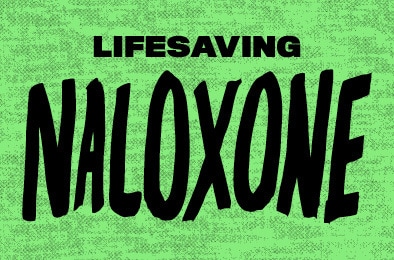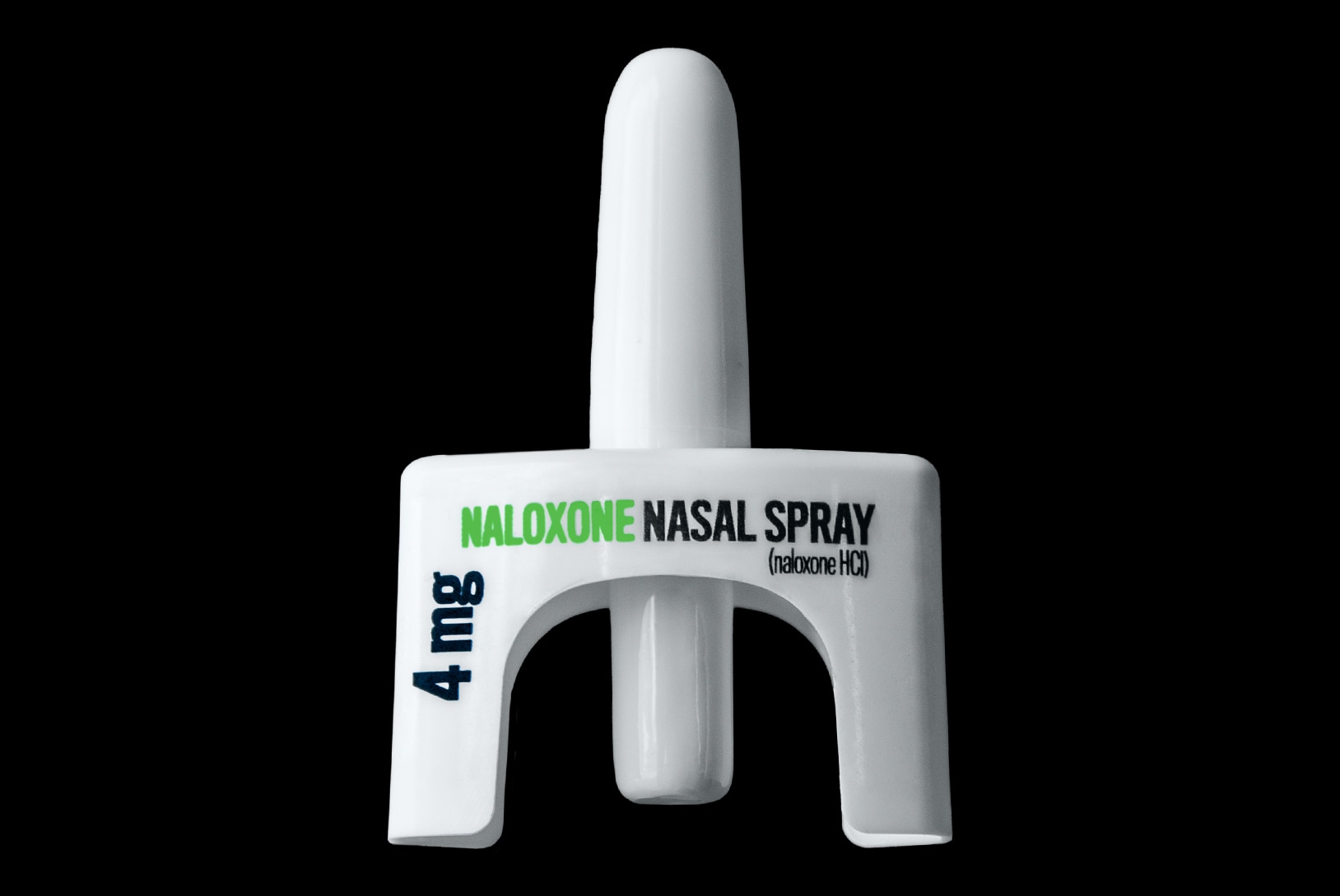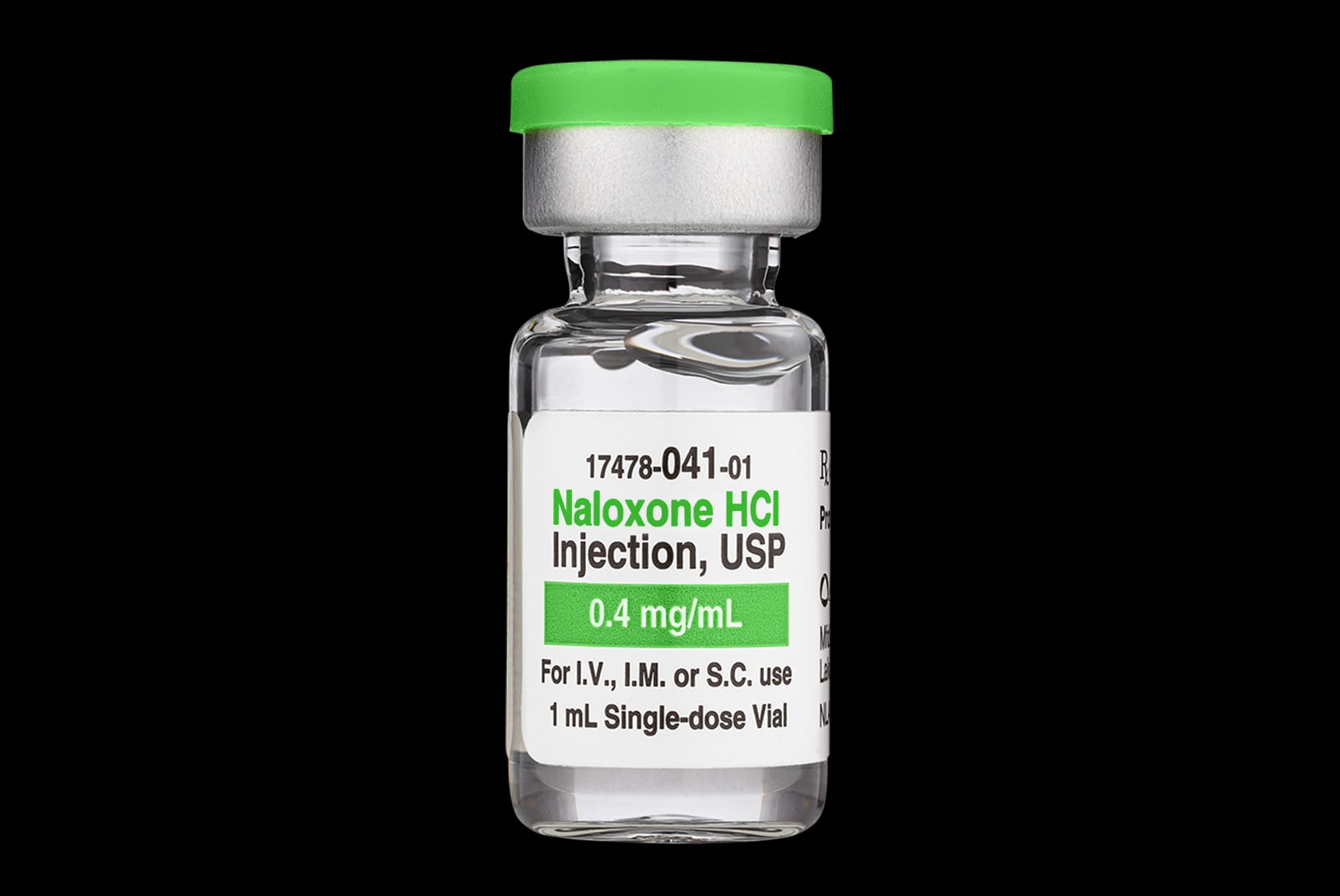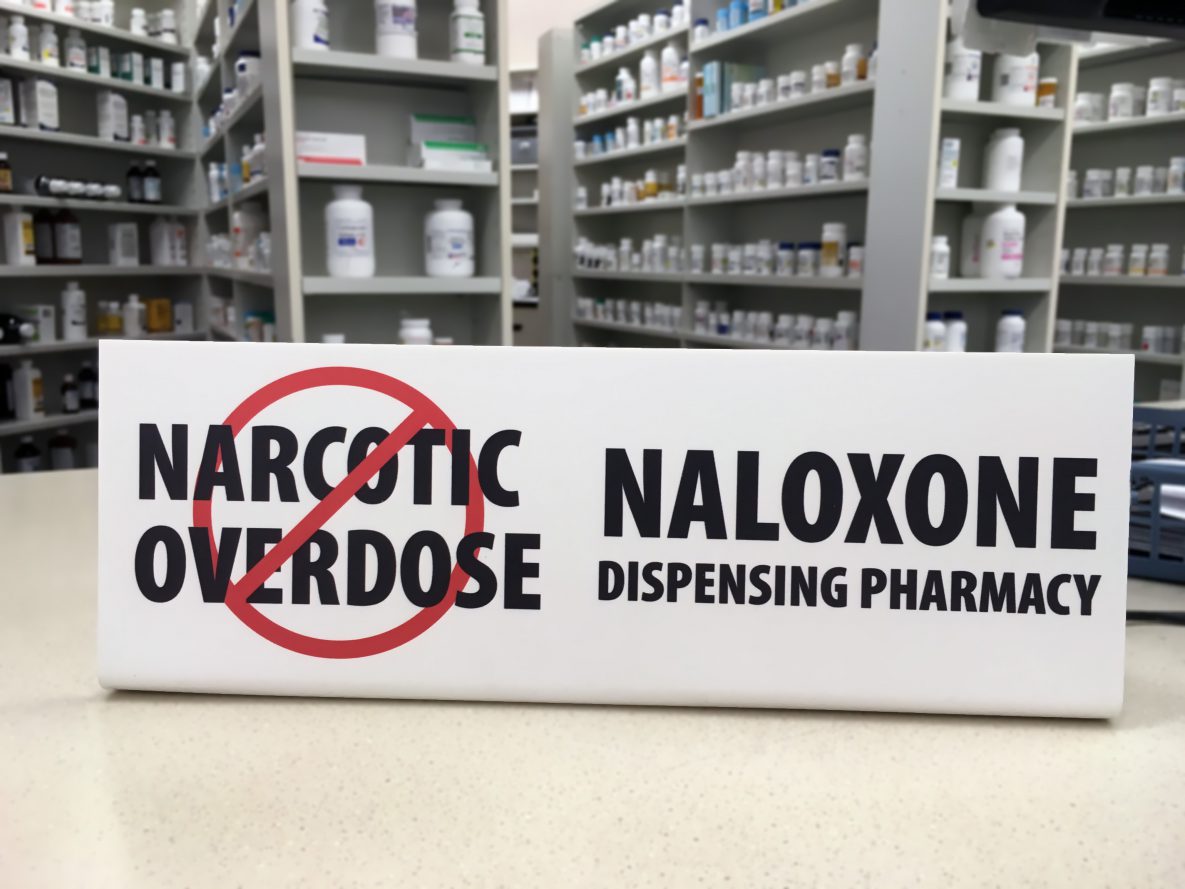5 Things to Know About Naloxone
Naloxone, for example Narcan®, is a medicine that can help people who are overdosing on an opioid. Opioids include prescription medications, heroin, and fentanyl. Sometimes other drugs, including cocaine and methamphetamine, are mixed, or laced with fentanyl.
Naloxone temporarily reverses the effects of an overdose from opioids, including:

- Heroin
- Morphine
- Oxycodone (OxyContin®)
- Methadone
- Fentanyl
- Hydrocodone (Vicodin®)
- Codeine
- Hydromorphone
- Buprenorphine
Naloxone can be administered by bystanders and is available as a(n):

Nasal Spray
Prefilled devices that spray medication into the nose.

Injectable
Medication (solution) given by injection into a muscle or under the skin.
For more information on the different forms of naloxone and how to use them please visit the Lifesaving Naloxone.
- Small, constricted “pinpoint pupils”
- Falling asleep or loss of consciousness
- Limp body
- Slow, shallow breathing
- Choking or gurgling sounds
- Cold and/or clammy skin
- Discolored skin (especially in lips and nails)
Naloxone can be given safely to people of all ages, from infants to older adults. This includes an adolescent or young adult who may have unintentionally taken an opioid.
During an overdose, a person’s breathing can be dangerously slowed or stopped, causing brain damage or death. It’s important to recognize the signs and act fast, even before emergency workers arrive.
If you think that someone is overdosing, please give them naloxone.
If you think that someone is overdosing on an opioid or another substance:
- Call 911 immediately.*
- Give naloxone as quickly as possible, if available. Do not wait for emergency workers to arrive before giving naloxone.
- Try to keep the person awake and breathing.
- Lay the person on their side to prevent choking.
- Stay with the person until emergency workers arrive.
Naloxone is a temporary treatment. More than one dose might be needed under some circumstances, especially if an overdose event involves illicitly manufactured fentanyls (IMFs).
*Most states have Good Samaritan Laws that may protect a person who is overdosing of the person who called for help from legal trouble.

Talk to your doctor or pharmacist if you or someone you know is taking prescribed opioids or using illicit opioids. You may also want to ask about naloxone if you work or volunteer in an environment where you may be able to help someone who is overdosing.
The cost of naloxone varies depending on where and how you get it, as well as your health insurance. People with insurance can check with their insurance company to see what the cost is, while individuals without insurance can check with their local pharmacies.
Contact your local health department to learn about community programs that may provide naloxone for free or for a reduced cost. You can also get naloxone from community-based naloxone programs and most syringe services programs.

- How and When to Use Naloxone for an Opioid Overdose [PDF – 2 pages]
- Naloxone: Family and Caregivers, What you need to know [PDF – 2 pages]
- Lifesaving Naloxone
- Life-Saving Naloxone from Pharmacies | VitalSigns Life-Saving Naloxone from Pharmacies | VitalSigns
- Opioid Use Disorder | Disease or Condition of the Week

